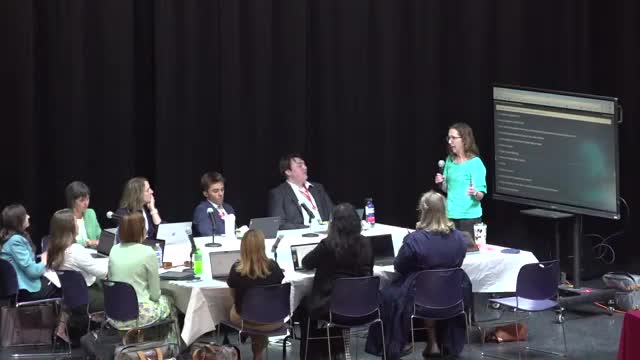County budget faces scrutiny amid rising property tax concerns
May 15, 2024 | Provo School District, Utah School Boards, Utah

This article was created by AI summarizing key points discussed. AI makes mistakes, so for full details and context, please refer to the video of the full meeting. Please report any errors so we can fix them. Report an error »

In a recent government meeting, officials discussed significant updates regarding property tax valuations, budget proposals, and enrollment trends within the district.
The meeting highlighted discrepancies in last year's property tax valuations, which were based on an estimated $9.4 billion rather than the actual $10 billion. This miscalculation resulted in higher-than-expected property tax revenues, providing a financial cushion for the county. Preliminary evaluations indicate a slight drop in property tax rates, which could lead to reduced taxes for homeowners whose property values have decreased. However, those with increased valuations may still see their taxes rise despite the lower rates.
The proposed budget for fiscal year 2025 is set at $251 million, a decrease from the previous year's $308 million, primarily due to the completion of several bond projects. The budget includes a notable increase in revenue, driven by property taxes, federal funds, and state allocations, including a $5 million boost for educator salaries. However, much of this funding is earmarked for specific purposes, limiting its flexibility.
Enrollment figures reveal a stagnant trend, with elementary school numbers declining significantly while secondary school enrollment has seen a modest increase. This shift has raised concerns about the sustainability of educational resources and staffing.
The meeting also addressed the complexities of the district's financial management, including the necessity of maintaining a budget cushion to avoid state scrutiny for overspending. Officials emphasized the importance of transparency in reporting funds, particularly regarding the municipal building authority and capital projects.
Overall, the discussions underscored the district's ongoing efforts to navigate financial challenges while ensuring adequate educational resources for students.
The meeting highlighted discrepancies in last year's property tax valuations, which were based on an estimated $9.4 billion rather than the actual $10 billion. This miscalculation resulted in higher-than-expected property tax revenues, providing a financial cushion for the county. Preliminary evaluations indicate a slight drop in property tax rates, which could lead to reduced taxes for homeowners whose property values have decreased. However, those with increased valuations may still see their taxes rise despite the lower rates.
The proposed budget for fiscal year 2025 is set at $251 million, a decrease from the previous year's $308 million, primarily due to the completion of several bond projects. The budget includes a notable increase in revenue, driven by property taxes, federal funds, and state allocations, including a $5 million boost for educator salaries. However, much of this funding is earmarked for specific purposes, limiting its flexibility.
Enrollment figures reveal a stagnant trend, with elementary school numbers declining significantly while secondary school enrollment has seen a modest increase. This shift has raised concerns about the sustainability of educational resources and staffing.
The meeting also addressed the complexities of the district's financial management, including the necessity of maintaining a budget cushion to avoid state scrutiny for overspending. Officials emphasized the importance of transparency in reporting funds, particularly regarding the municipal building authority and capital projects.
Overall, the discussions underscored the district's ongoing efforts to navigate financial challenges while ensuring adequate educational resources for students.
View full meeting
This article is based on a recent meeting—watch the full video and explore the complete transcript for deeper insights into the discussion.
View full meeting

